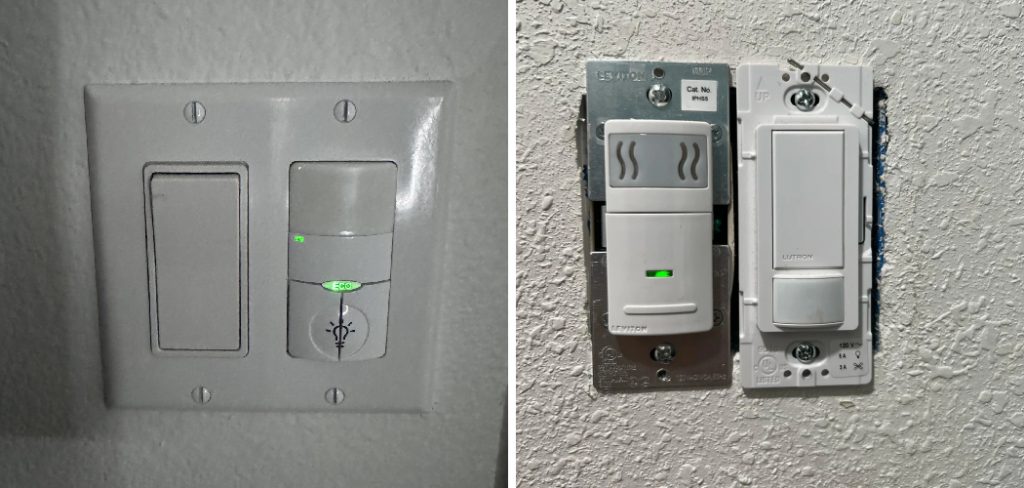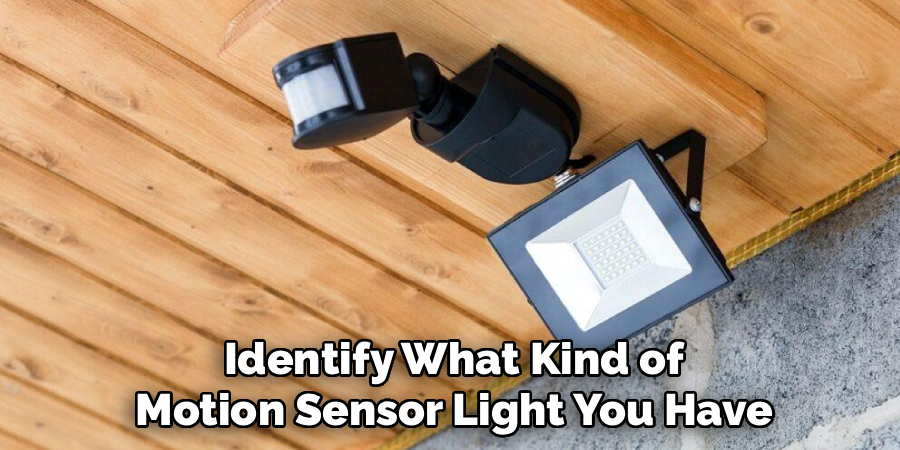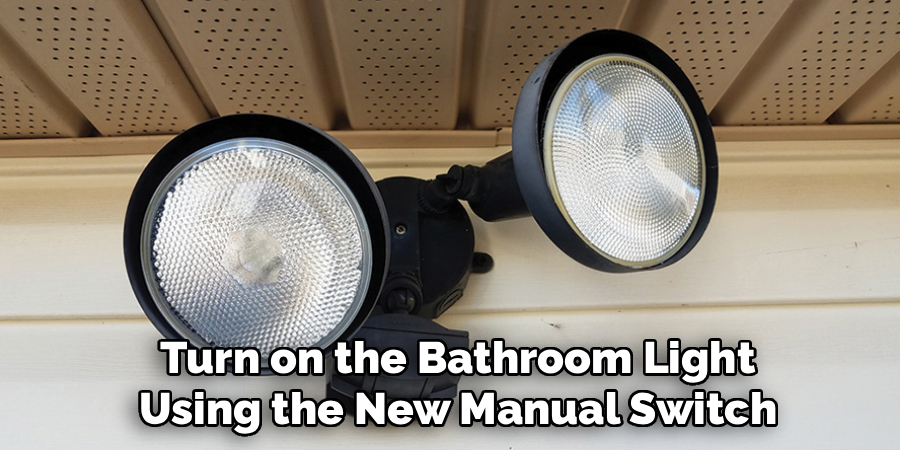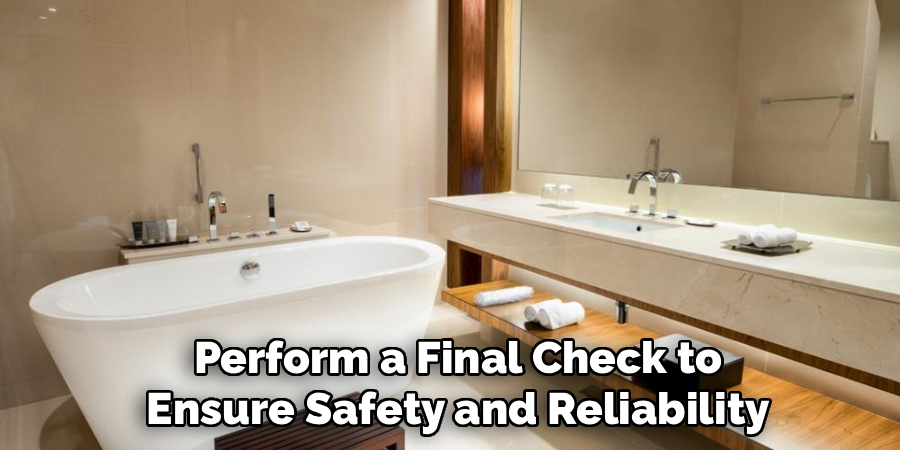Motion sensor lights in bathrooms are convenient, energy-efficient, and great for hands-free illumination. They automatically turn on when movement is detected and shut off after a set period of inactivity. However, there are times when you may prefer to turn them off—perhaps to install a new fixture, save energy, or regain manual control over your lighting system.

Understanding how to turn off a motion sensor light safely and properly is important to avoid damaging the fixture or causing wiring issues. Whether it’s a ceiling-mounted sensor or a wall switch with a built-in sensor, following a careful step-by-step process on how to turn off motion sensor light in bathroom will help you disable it efficiently without compromising safety.
Tools and Materials You’ll Need
- Screwdriver (Flathead and Phillips)
- Voltage Tester or Multimeter
- Electrical Tape
- Wire Connectors or Wire Nuts
- Small Flashlight (if Power is Off)
- Step Ladder or Stool
- User Manual for Your Light Fixture or Switch
- Optional: Replacement Switch (Manual on/off Type)
- Safety Gloves
- Non-contact Voltage Detector
10 Step-By-Step Guidelines on How to Turn Off Motion Sensor Light in Bathroom
Step 1: Identify the Type of Motion Sensor Light
Before making any changes, first identify what kind of motion sensor light you have. Some bathroom fixtures have built-in sensors, while others use a separate wall switch or ceiling-mounted motion detector. Knowing this helps you determine how to disable it properly.

Check whether the motion sensor is integrated into the light itself or controlled through a smart switch. If it’s part of a smart home system, you may be able to turn it off through an app or wall control instead of physically disconnecting it. Understanding the setup prevents unnecessary dismantling.
Step 2: Locate the Power Source and Turn It Off
Safety should always come first. Locate your bathroom’s circuit breaker and turn off the power supply before working on the light. If you’re unsure which breaker controls the bathroom, turn off the main power for added safety.
Use a voltage tester or non-contact voltage detector to confirm that the circuit is indeed off. Test the light switch or sensor connection to make sure there is no current. Working without confirming power-off can lead to electrical shock or damage to the fixture.
Step 3: Remove the Light Fixture or Wall Plate Cover
Once you’ve ensured the power is off, remove the light fixture or switch cover where the motion sensor is located. Use a screwdriver to gently loosen the screws on the wall plate or ceiling cover. Be careful not to strip the screws or damage the wall surface.
Pull the fixture or switch forward slightly to access the internal wiring. Keep track of all screws and covers you remove so you can reassemble them easily later. If the sensor is integrated, you’ll typically find it behind a small plastic dome or inside the switch box.
Step 4: Identify the Motion Sensor Wires and Components
Inside the fixture or switch box, you’ll see several wires—typically a live (black), neutral (white), and ground (green or bare copper). The motion sensor unit will usually be connected between the live input and the light’s load wire.
Look closely to identify which small module or set of wires belongs to the motion sensor. Some units have labels like “Sensor,” “Load,” or “Line.” If available, refer to your fixture’s wiring diagram or manual to confirm which connections correspond to the sensor.
Step 5: Disconnect or Bypass the Motion Sensor
Once identified, you can disable the motion sensor by disconnecting it from the circuit. To do this, unscrew the wire connectors that link the sensor’s wires to the power and light connections. You’ll typically reconnect the live input directly to the load wire, bypassing the sensor module.
Use wire connectors to safely cap the disconnected sensor wires, ensuring no exposed copper is visible. If you plan to permanently bypass the sensor, wrap the ends in electrical tape and secure them neatly inside the junction box. This allows manual switch control instead of automatic activation.

Step 6: Replace the Motion Sensor Switch with a Regular Light Switch
If your bathroom uses a motion sensor wall switch, it may be easier to replace it entirely with a standard on/off switch. Purchase a compatible single-pole or three-way switch based on your wiring setup.
Disconnect the existing motion switch, noting the wire positions before removal. Attach the new manual switch using the same wire terminals (Line, Load, and Ground). After securing the connections, screw the new switch into place and reinstall the wall plate. This change restores full manual control.
Step 7: Reassemble the Fixture and Secure Connections
Before restoring power, double-check all your connections. Ensure that wire nuts are tight and that no bare wire is exposed. Use electrical tape to reinforce connections if needed. Carefully push the wires back into the box without crimping or pinching them.
Reattach the wall plate, switch cover, or fixture housing using your screwdriver. If your light fixture was removed, make sure all mounting brackets are properly aligned before tightening the screws. Proper reassembly ensures safety and durability.
Step 8: Restore Power and Test the Light
Go back to the electrical panel and switch the breaker back on. Turn on the bathroom light using the new or existing manual switch. If it illuminates and remains steady without flickering or turning off automatically, your bypass is successful.
If the light doesn’t respond, turn the breaker off again and recheck your wiring connections. Make sure the live wire and load wire are properly joined. Small wiring errors can prevent the light from functioning correctly.
Step 9: Adjust or Disable Sensor Settings (For Smart or Programmable Lights)
If your motion sensor light is part of a smart system or has adjustable settings, you may not need to physically remove it. Many models allow you to disable motion detection through a switch setting or app control.
Check the manufacturer’s instructions for details. Some smart switches include an “always on” mode that overrides motion detection. Others may let you set a timer duration to “infinity” so the light stays on continuously. Using the software interface can save time and prevent hardware tampering.
Step 10: Perform Final Safety and Functionality Checks
Once everything is reassembled and working, perform a final check to ensure safety and reliability. Verify that the light turns on and off manually without delay, and that no part of the sensor circuit is exposed.

Observe the fixture for a few minutes to confirm stable performance. If the motion sensor still triggers automatically, it might be connected through a parallel circuit, which means you may need to disable it at the control module. Ensure that the setup complies with electrical safety standards before finalizing.
Following these steps on how to turn off motion sensor light in bathroom will not only save energy, but it will also prolong the lifespan of your fixture and sensor. It is important to regularly check and maintain your bathroom motion sensor light to ensure its proper functioning.
Additional Tips
- Always consult your fixture’s manual before altering electrical connections.
- If your home is under warranty, check whether modifying the circuit affects coverage.
- For smart home systems, try software settings before attempting manual disconnection.
- Keep replacement switches or sensors on hand in case you want to revert later.
- Label your circuit breaker to make future maintenance easier.
- Use high-quality wire connectors and follow standard electrical color codes.
Common Mistakes to Avoid
- Working without turning off the power at the breaker.
- Mixing up line and load wires during reinstallation.
- Forgetting to use a voltage tester before touching wires.
- Leaving disconnected wires exposed inside the wall box.
- Ignoring manufacturer-specific wiring diagrams and sensor settings.
Do You Need To Use Professionals?
If you’re comfortable handling basic electrical work, turning off a motion sensor light is a manageable DIY task. However, if the wiring setup is complex or if you’re uncertain about identifying wires safely, hiring a licensed electrician is strongly recommended.
Professionals can quickly determine whether the motion sensor is wired in series, parallel, or integrated into a smart circuit. They’ll ensure that the bypass or replacement follows local electrical codes and that your bathroom lighting remains safe from short circuits or overloads. While it might cost a bit more, professional service guarantees peace of mind and avoids costly mistakes.
Frequently Asked Questions
Q1: Can I Turn Off a Motion Sensor Light Without Rewiring?
A1: Yes, in many cases, you can disable a motion sensor light without rewiring. Most models have manual override functions accessible through a switch toggle or settings menu. Try turning the switch on and off twice quickly or using the app (for smart versions) to disable motion mode.

Q2: Why Does My Bathroom Motion Light Keep Turning Off Too Soon?
A2: If your motion sensor light shuts off prematurely, it may be due to sensitivity or timer settings. Many fixtures allow you to adjust the delay duration or detection range using small dials or buttons. Check the manual for adjustment options to ensure the light stays on as long as needed.
Q3: Is It Safe to Bypass a Motion Sensor Permanently?
A3: Yes, it’s generally safe to bypass a motion sensor if done correctly. However, you must follow proper wiring practices and ensure all connections are insulated. Avoid bypassing circuits if you’re unfamiliar with electrical systems—otherwise, seek help from a professional to ensure compliance with safety standards.
Conclusion
Turning off a motion sensor light in your bathroom can give you more control and flexibility, especially if you prefer manual operation or want to troubleshoot frequent flickering or false triggers. By understanding your fixture type, disconnecting power safely, and methodically bypassing the sensor, you can achieve a reliable lighting setup that meets your preference.
Whether you choose to replace the motion switch or disable the sensor electronically, always prioritize safety and follow proper procedures. When in doubt, don’t hesitate to seek professional assistance.
With careful handling, you can successfully turn off your bathroom motion sensor light and restore traditional control without compromising your home’s electrical integrity. Thanks for reading this article on how to turn off motion sensor light in bathroom.
About
Safety Fic is a distinguished figure in the world of Diy design, with a decade of expertise creating innovative and sustainable Diy solutions. His professional focus lies in merging traditional craftsmanship with modern manufacturing techniques, fostering designs that are both practical and environmentally conscious. As the author of diy, Safety Fic delves into the art and science of Safety Fic-making, inspiring artisans and industry professionals alike.
Education RMIT University
(Melbourne, Australia) Associate Degree in Design (Safety Fic) Focus on sustainable design, industry-driven projects, and practical craftsmanship. Gained hands-on experience with traditional and digital manufacturing tools, such as CAD and CNC software.
Nottingham Trent University
(United Kingdom) Bachelor’s in diyfastly.com and Product Design (Honors) Specialized in product design with a focus on blending creativity with production techniques. Participated in industry projects, working with companies like John Lewis and Vitsoe to gain real-world insights.
Publications and Impact
In diy, Safety Fic his insights on indoor design processes, materials, and strategies for efficient production. His writing bridges the gap between artisan knowledge and modern industry needs, making it a must-read for both budding designers and seasoned professionals.
